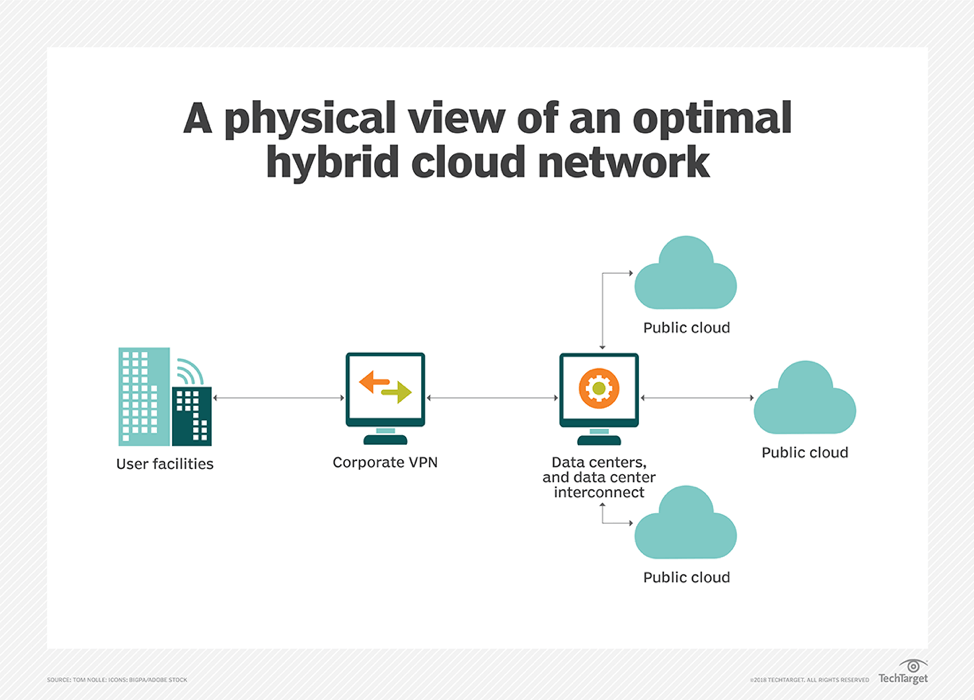
Modern business IT demands connections that are faster, more intricate, and constantly available. For managed service providers (MSPs), hybrid cloud architecture offers an easy, efficient, and secure means to meet these client demands – but, for all the benefits you and your clients gain from hybrid cloud storage solutions, many still find the hybrid cloud approach and hybrid cloud management unreasonably complicated.
Still, hybrid cloud services have been growing in popularity in recent years. Between 2015 and 2016, hybrid cloud adoption grew 3x and an IBM survey from last year revealed that 98% of companies are planning to use multiple hybrid clouds soon. Unfortunately, the same study also indicated that more than half of these companies lack the tools and processes for effective multi-cloud management.
This suggests that, while interest in hybrid cloud architecture is high, understanding of the hybrid cloud isn’t keeping pace. Review this quick overview guide for a fundamental understanding of the hybrid cloud approach to data management and determine if hybrid cloud services are right for your MSP and your clients.
Everything MSPs need to get started with hybrid clouds:
- What is a Hybrid Cloud?
- Hybrid Cloud Benefits
- How do Hybrid Cloud Services Work?
- Public vs. Private vs. Hybrid Cloud
- Final Thought: Is the Hybrid Cloud for You?
What is a Hybrid Cloud?
Hybrid cloud definitions have varied through the years, largely because vendors coined the term and chose what it did and did not relate to. Today, however, the definition of hybrid cloud architecture is firmer:
Hybrid Cloud
A hybrid cloud is a computing environment that combines a public cloud and a private cloud by allowing data and applications to be shared between them. When computing and processing demand fluctuates, hybrid cloud computing gives businesses the ability to seamlessly scale their on-premises infrastructure up to the public cloud to handle any overflow—without giving third-party data centers access to the entirety of their data. Organizations gain the flexibility and computing power of the public cloud for basic and non-sensitive computing tasks, while keeping business-critical applications and data on-premises, safely behind a company firewall. [Microsoft Azure]
Hybrid Cloud Benefits
As your clients’ need for consistent, round-the-clock data accessibility grows, the cost of downtime rises to $250,000 each hour, and data increasingly migrates away from traditional data centers, the mix of resources that make up a hybrid cloud prove to be invaluable. These hybrid cloud benefits include data storage diversification for increased cyber security, increases in both data deployment and IT services flexibility, and potentially significant cost savings over other cloud architecture options.
Hybrid Cloud Storage Diversification
Hybrid cloud architecture enables MSPs to incorporate a combination of diverse platforms including public clouds and private clouds. By providing a wide range of hybrid cloud storage options, you can attract a wider variety of customers, open doors into new market segments, and ensure data security and accessibility for all your customers, regardless of their location and device type.
Hybrid Cloud Solutions Flexibility
One of the most appreciated hybrid cloud benefits is its flexibility. For MSPs, the hybrid cloud approach enables you to provide resources when and where they’re needed while minimizing the expenses required for always-on capabilities. Known as “cloud bursting”, hybrid cloud services configure private and public clouds to more efficiently deal with peaks and valleys in IT demands so that service interruptions are reduced or eliminated.
Hybrid Cloud Cost Savings
A factor that MSPs can’t afford to overlook when switching to hybrid cloud solutions is the savings to be had by replacing multiple solutions – and the hardware, training, and maintenance time that goes into them – for a single hybrid cloud architecture. While some think the complexity of the hybrid cloud will lead to increased costs, improved ease of use, and improved scalability ensure that hybrid cloud costs and the total cost of ownership (TCO) stay low.
How Do Hybrid Cloud Security Services Work?
Hybrid clouds combine public clouds and private clouds, allowing data to move seamlessly between the environments. That interconnectivity is made possible first through data virtualization, then through connective tools and protocols like application programming interfaces (APIs), virtual private networks (VPNs), and/or wide area networks (WANs).

Each of the environments that make up your hybrid cloud architecture has its own benefits and uses. By combining them all into a single hybrid cloud – or a multi-cloud environment, if you’re dealing with particularly large arrays of data – your organization gains greater control over data safety, accessibility, privacy, authenticity, and security both for your IT infrastructure and for your customers’ data, applications, and systems.
Because of this enhanced control over both MSP and client data and the other hybrid cloud benefits discussed above, the infrastructure is seeing enormous growth. In fact, by next year 90% of organizations will adopt hybrid cloud infrastructure management, causing tremendous growth in the hybrid cloud market size, Gartner reports.
Still, for MSP organizations that are beginning to explore the world of cloud computing – or looking to expand their cloud computing offerings – it can be difficult to tell which cloud configuration best suits their needs and their customers’ demands.
Public vs. Private vs. Hybrid Cloud
Choosing to invest in cloud solutions and transition customer data to your new cloud storage can be intimidating, particularly when the abstract idea of “The Cloud” becomes more concrete. Understanding the difference between public, private, and hybrid clouds is key to making the best choice for your MSP business.
Ultimately, though, finding the right cloud solution for your organization depends on what you’re hoping to offer your customers. Each cloud deployment option comes with its strengths and weaknesses and, despite the advantages of hybrid cloud services, no single solution will be right for everyone.
Managing Hybrid Cloud Security and Architecture with Acronis Cyber Protect Cloud
Acronis Cyber Protect Cloud — a platform that enables service providers to deliver cyber protection in an easy, efficient and secure way. With one solution, users gain access to cloud backup, cloud disaster recovery, ransomware protection, file sync and share, and blockchain-based file notarization and e-signature services, all managed from a single console.
The cyberthreat landscape is vast and constantly evolving. Standalone cyber security and data protection solutions are helpful in securing workloads, but they leave gaps in your defenses. A multilayered approach incorporating the latest cyber security technology alongside data security and authentication is necessary to provide reliable protection for modern workloads across multiple domains.
About Acronis
A Swiss company founded in Singapore in 2003, Acronis has 15 offices worldwide and employees in 50+ countries. Acronis Cyber Protect Cloud is available in 26 languages in 150 countries and is used by over 20,000 service providers to protect over 750,000 businesses.




